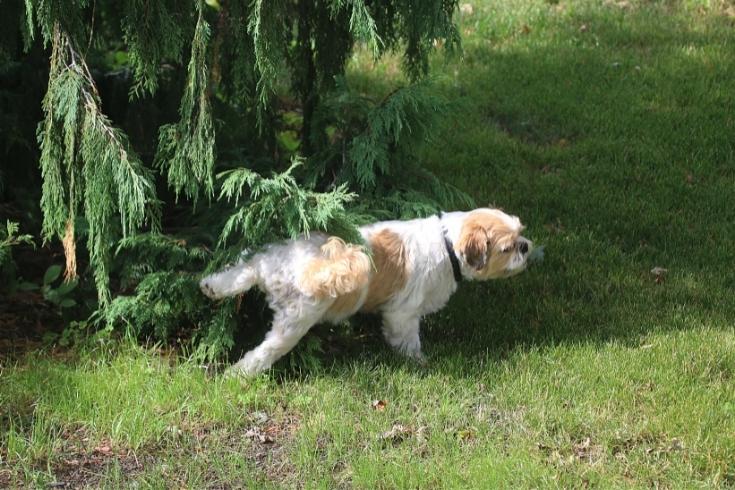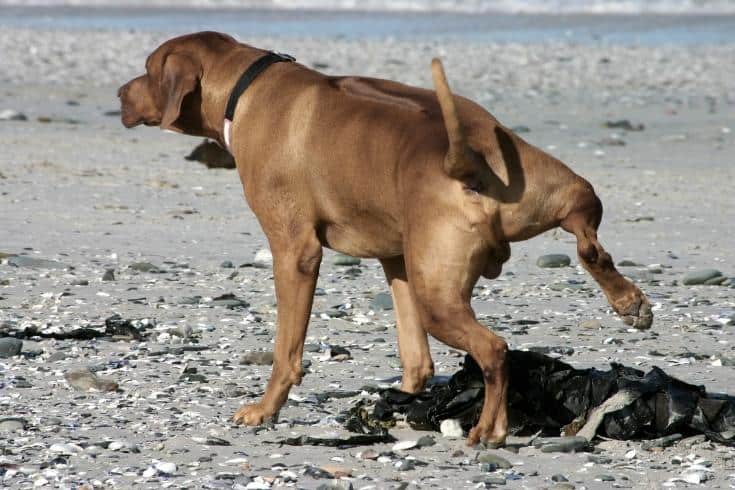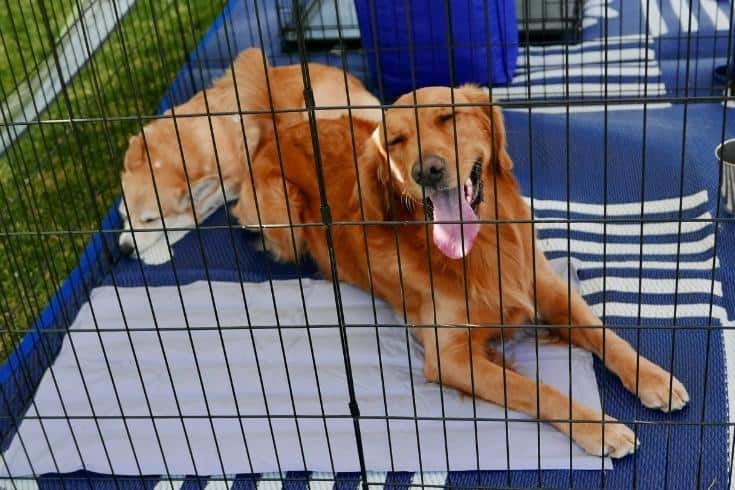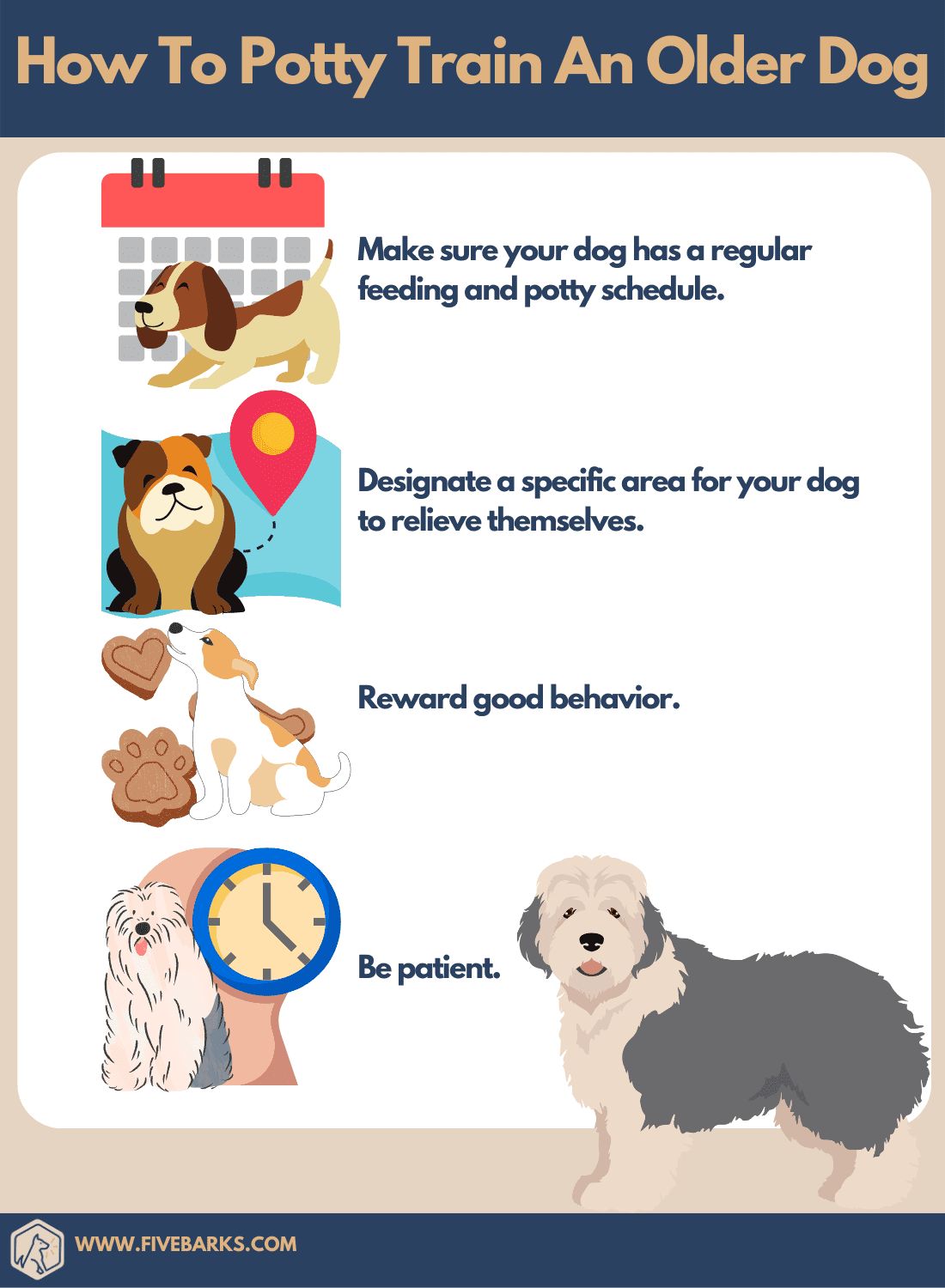Let’s face it, no one enjoys cleaning up accidents. It’s a smelly, dirty job that’s just part of being a pet parent and your dog’s bathroom habits. But it doesn’t have to be that way! With a little patience and consistency, you can potty train your older dog and avoid those dreaded clean-up sessions. Here’s everything you need to know about how to potty train out of bad habits in an older dog.
How Long Does It Take To Potty Train An Older Dog?

The answer to this question depends on several factors, including your dog’s age, previous training (if any), and general temperament. That said, most dogs can be successfully potty trained within a few weeks with consistent effort on your part.
One of the most important things to remember when potty training an older dog is that accidents are bound to happen, especially in the beginning. Be patient and remain calm when this happens; getting angry or frustrated will only make the process take longer. Instead, simply clean up the mess and continue with your house training routine.
When To Start Potty Training An Older Dog
The best time to start potty training an older dog is when they are between the ages of six months and one year old. At this puppy stage, they are old enough to understand simple commands and have the attention span necessary for a successful potty training session. This builds a great foundation for training and giving your adult dog a refresher course on where to potty.
However, if you have an older dog that lacks training as a puppy or is going through potty training regression, it’s not too late! You can start potty training at any age, even if they did forget and you’ve ruled out any medical reasons.
How To Potty Train An Older Dog

The first thing you need to do is establish a consistent bathroom routine and outline the potty training steps. Just like humans, dogs thrive on routines. Set specific times for meals, walks, and potty breaks, and stick to those times as closely as possible. If you can’t be home at the usual potty break time, ask a neighbor or pet sitter to let your dog out for a few minutes.
If your pooch has an accident, clean it up immediately. Dogs have a strong sense of smell, and if they can smell their own waste, they’ll be more likely to go to the same spot again. When cleaning up accidents, use an enzymatic cleaner specifically designed for pet waste to eliminate the scent.
Punishing your dog for having an accident will only confuse them and make them have a difficult time adjusting. If you catch them in the act, calmly say “no” or “outside” and take them out for some outdoor time immediately. Reward them with praise or a treat for their potty training success.
What Are The Best Potty Training Methods For Older Dogs?
There are several methods you can use to potty train your older dog, but some are more effective than others. One popular method is crate training, which involves confining your dog to a confined space (usually a pen or crate) when you can’t supervise them directly. This will prevent them from having accidents in the house and will give them a safe place to stay when they’re not allowed to roam free.
Another common method is called the leash method, which involves keeping your pup on a leash at all times when they’re inside the house. This will allow you to correct them if they start having an accident and will also give you more control over their movements.
Finally, many people find success with positive reinforcement techniques, such as rewarding their dog with treats or praise whenever they go potty in the correct place. This method takes advantage of your dog’s natural desire for food and attention and can be very effective in teaching them where they should potty.
What Methods To Use

There are a variety of methods you can use to potty train your older dog. The most important thing is to be consistent with whatever method you choose. Some popular methods include crate training, using pee pads or newspapers, using a hands-free leash, and taking your dog out on a regular schedule.
- Crate Training: Crate training involves confining your dog to a small space (usually a crate or pen) when they are not being supervised so that they learn to hold their bladder until they are let out. This method works well for dogs that are nervous or easily distracted because it provides them with a safe space where they can relax without having to worry about making mistakes.
- Pee Pads Or Newspapers: If you live in an apartment or don’t have easy access to a backyard, using pee pads or newspapers can be an effective way to potty train your dog. Place the pee pad or newspaper in a designated area and encourage your dog to use it when they need to go. As they learn where their designated potty spot is, you can edge it closer and closer to the door until they are going outside.
- Regular Schedule: Taking your dog out on a regular schedule—at least every two hours during the day—is another effective method for potty training an older dog. This method works best if you take your dog out first thing in the morning, right after meals, and right before bedtime so that they learn to associate going outside with these activities.
Troubleshooting Problems
There are a few common problems that occur while potty training an older dog. The most common are accidents inside the house because of excitement or anxiety. If this happens, remain calm and bring your dog outside immediately so that they can finish in their designated spot.
Clean up any accidents with an enzymatic cleaner designed specifically for pet stains so that your dog doesn’t smell their own scent and thinks it’s okay to go inside. Another common problem is dogs eating their own feces (a behavior known as coprophagia).
While this may seem gross, it’s actually fairly normal for dogs and puppies—especially those that aren’t spayed or neutered—to eat their own poop as a way of getting rid of the evidence of their “territory.” If this becomes a problem, there are products available that make feces taste bad so that your dog will be deterred from eating it.
FAQs
Does rubbing your dog’s nose in pee work?
I’m a dog owner, and I’ve been through the potty training process with several puppies now, both mine and my clients. I can tell you from experience that rubbing your dog’s nose in their pee will not work. In fact, it’s likely to make the problem worse. Here’s why.
When you rub your dog’s nose in their pee, you’re not teaching them anything. All you’re doing is making them scared of you. And when your dog fears you, they will not want to listen to anything you have to say. So, if your goal is to potty train your dog, rubbing their nose in their pee is the exact opposite of what you should be doing.
Besides making your dog scared of you, rubbing their nose in their pee will make them more likely to repeat the behavior. That’s because dogs are creatures of habit. If they associate getting their noses rubbed in their own urine with being scolded by you, they’re going to think that urinating in front of you is something they need to do to get attention. And negative attention is the last thing you want!
If you’re looking for a better way to train your dog, I recommend checking out some positive reinforcement-based methods instead. Your dog (and your relationship with them) will be much better off in the long run.
How to potty train an older dog without a crate?

Potty training a puppy is hard enough. But potty training an older dog? That can feel downright impossible. Fortunately, it is possible to potty train an older dog without resorting to a crate—but it’s going to take some patience (on your part) and consistency (on your dog’s part). Here’s how to do it.
- Start with the basics. Make sure your dog has a regular feeding and potty schedule. Dogs are creatures of habit, so the more regular their routine is, the easier it will be for them to learn where and when they should go to the bathroom.
- Establish a potty spot. Just like you would with a puppy, you’ll need to designate a specific area for your dog to relieve themselves. Once you’ve chosen a spot, take your dog there frequently—several times a day, if possible—and give them plenty of time to do their business.
- Reward good behavior. Whenever your dog goes potty in their designated spot, be sure to give them lots of praise and maybe even a treat. This will reinforce the positive behavior and help them learn that they’re doing what you want them to do.
- Be patient. Potty training an older dog will not happen overnight. It will take time, patience, and consistency on your part—but eventually, your dog will get the hang of it.
Potty training an older dog doesn’t have to be impossible—or require a crate. By following the steps outlined above, you can successfully teach your older dog where and when they should go to the bathroom… without losing your sanity. Good luck!
Conclusion
I know potty training an older dog may seem like a daunting task, but it’s definitely possible with a little patience and consistency. There are several methods you can use, but I feel that crate training, the leash method, and positive reinforcement are all popular choices and have been proven to be effective.
Whichever method you choose, remember that accidents are bound to happen—so stay calm and keep at it! With time and effort, your older dog will learn where they should potty—and you’ll be able to enjoy a cleaner house as a result!
